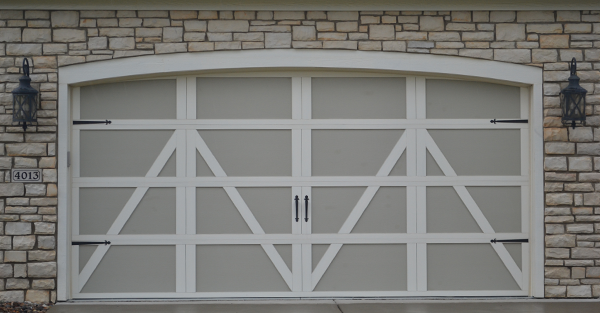Fixing your broken garage door spring can be a costly repair to make. However, it’s something that everyone has to deal with eventually. Garage door springs don’t last forever, although you will find that properly maintaining your door’s spring will increase its life expectancy and save you money over time.
Why do garage door springs break?
Your garage door spring could break for a variety of reasons. It could break because of fluctuations in temperature, old age, rust, or because it hasn’t been maintained or adjusted properly over the years. On average, springs last around 6-10 years, or for about 10,000 cycles. A cycle includes a one-time opening and closing of the door. Of course, this can vary greatly, depending on how often you use your garage door, how well you maintain it, and the spring’s durability.
How can I tell if the spring is broken on my garage door?
If you notice any of the following signs, it likely means your spring is broken or needs to be repaired.
- Your door is not closing all the way or doesn’t close evenly with the ground.
- Your door won’t open when you use your automatic opener.
- When you look at the spring, you can see that it has lost its tension.
- If the spring snaps, the door could come crashing down suddenly. (Just hope that if this happens, no one or nothing is in its path.) If the spring breaks in this manner, it will make a very loud noise.
Note: The spring will likely break when the door is already down; however, it is possible that it could snap when the door is up, sending it crashing down as it breaks.
What do I do after the spring breaks?
Because of the potential danger involved here, do not attempt to move your door (no matter its position) if your spring has broken. Garage doors are extremely heavy to lift with no springs attached. Call WD Door for help.
How do I prevent this from happening again in the future?
To extend the lifespan of your door springs:
- Purchase high-cycle torsion springs when replacing your current springs. (These likely won’t cost you much more than standard springs and could last many years longer.)
- Only use your door when you have to. (Decrease the number of cycles over time.)
- Have your door maintained regularly. (Have it inspected once every year to assure it runs smoothly.)
- Lubricate the springs as recommended by your door manufacturer. (Use a non-silicone-based lubricant. A light-duty (10W-30) motor oil can be used on the springs.)
Can I replace the spring(s) on my own?
NO. We strongly advise you NOT to attempt to replace broken springs on your own. This can be very dangerous for anyone other than a professionally trained technician. Garage door springs are under extreme tension and have the potential to do a lot of harm and damage.
If you have a broken spring and need to have the problem fixed quickly, give us a call on our emergency, 24-hour service line: (515) 963-0989. To contact us for non-emergency service, email us here.
If you do have a broken spring, it can be replaced without having to replace your entire garage door. However, if you wait to replace your spring(s), your door may succumb to damage over time and may end up needing to be replaced entirely. If your door has two springs instead of one, think about replacing both of them, since they are probably on the same life cycle.
If you need a new spring or would like to replace your entire garage door, contact WD Door. We proudly serve customers around Iowa.
Check out our previous blog post, “8 Signs Your Broken Garage Door Needs to be Replaced.“

